About 134,000 companies in the UK use Microsoft 365. One of the reasons it’s such a popular cloud productivity tool is that Microsoft keeps increasing the value of the platform through new features, additions, and applications.
Companies can lower operational costs considerably by choosing the best cloud tools. Integrated platforms that have several applications in one subscription tend to be the most cost efficient and productive.
Benefits of using an integrated cloud platform with several apps include:
- Easy to create automated workflows
- Apps natively share data
- Only one main interface type to learn
- Administration & security are easier to manage
- Ability to collaborate within apps
- Lowers costs of cloud subscriptions
Microsoft just made their platform more valuable through the addition of a new app that’s included in Microsoft 365 plans that have SharePoint. As of the end of August, they completed rollout of Microsoft Lists.
What Microsoft Lists Is
Microsoft Lists is a way to dynamically use lists to automate and optimize multiple workflows. The app can be used to organize and stay on top of things like events, issues, assets, and more.
Some of the features that make Microsoft Lists more than just a task management app, include:
- Ability to share lists with others
- Use lists in the app or within Microsoft Teams
- View recent and favorite lists
- Automate list activity notifications
- Track when items are completed
- Use images with lists (i.e. an inventory list)
- Create automations through rules
- See lists in multiple views (calendar, grid, gallery, or custom view)
The rules feature is one that can reduce the time it takes to manage list-related workflows. It allows you to add different rules that can trigger activities.
For example, you can choose to notify someone when a column value of a list changes or a new list item is created or deleted.
Where Microsoft Lists Can Help You Improve Processes
Business workflows include all types of lists. There are employee onboarding tasks that need to happen, lists for electronic assets, security sign-in logs, project management task lists, and more.
What the Lists app does is take these from manual processes (spreadsheets, pen/paper, etc.) and makes them cloud based, dynamic, and sharable, making these processes more efficient.
The app includes several pre-built templates that can get you started pretty quickly, and you can also create and customize your own list templates
If you have a Microsoft 365 Business or Enterprise plan that includes SharePoint, then you get Microsoft Lists at no extra cost. Here are some ways you can take advantage of this new value-add to your subscription.
Inventory/Asset Management
Trying to identify a piece of equipment from a long text-based list can be tedious, but if you have a picture to match an asset to, it’s easier to immediately identify what you’re looking for.
You can use the Asset Management template in Lists to visually view your assets, note which person each is assigned to, and include things like warranty information.
Remote Work Onboarding Process
The coronavirus pandemic has made remote working a norm in many offices throughout the UK. This has led to an entirely new onboarding process need, which includes ensuring employees know how to work remotely safely, avoid shadow IT, and have the equipment they need to work productively.
You can use Microsoft List to manage a remote work onboarding process, and to keep track of when each item has been checked off on the list. You can even set up a rule to notify the person responsible for the next task, when the last task has been completed.
Some items you might include:
- Reviewed & signed remote work security policy
- Assigned VoIP phone number/extension
- Issued laptop and headset
- Microsoft Teams training completed
- Remote work schedule reviewed
Manage Customer Issue Resolution
If you’re using emails to try to manage customer service issues, you could be left with a mess when it come to trying to track a problem from start to finish. This method can also leave dropped balls because the person that needs to respond to a problem might not have been the one the customer contacted initially.
Another template you can use within Microsoft Lists is for issue tracking. This allows you to set up a system that notes the severity of each issue, its status in the resolution process, and who is assigned to manage the issue.
This template is particularly helpful because it can take the place of another app you might use to do this type of issue tracking.
Security Sign-in List
If you use a manual sign-in list at your front desk for visitors, you can automate this process by using Microsoft Lists instead.
You could use an electronic sign-in list on a tablet and even attach photos of each visitor’s identification to their log entry. The list can also be immediately shared with anyone within your organization, so someone could know immediately if there was a visitor for their department.
Learn How to Automate & Save Time Using Smart Cloud Tools
NMX IT Solutions can help your Thames Valley area business take full advantage of Microsoft Lists as well as other cloud tools to automate and streamline to lower costs while improving productivity.
Contact us today to schedule your consultation! Call 01628 232300 or reach out online.

